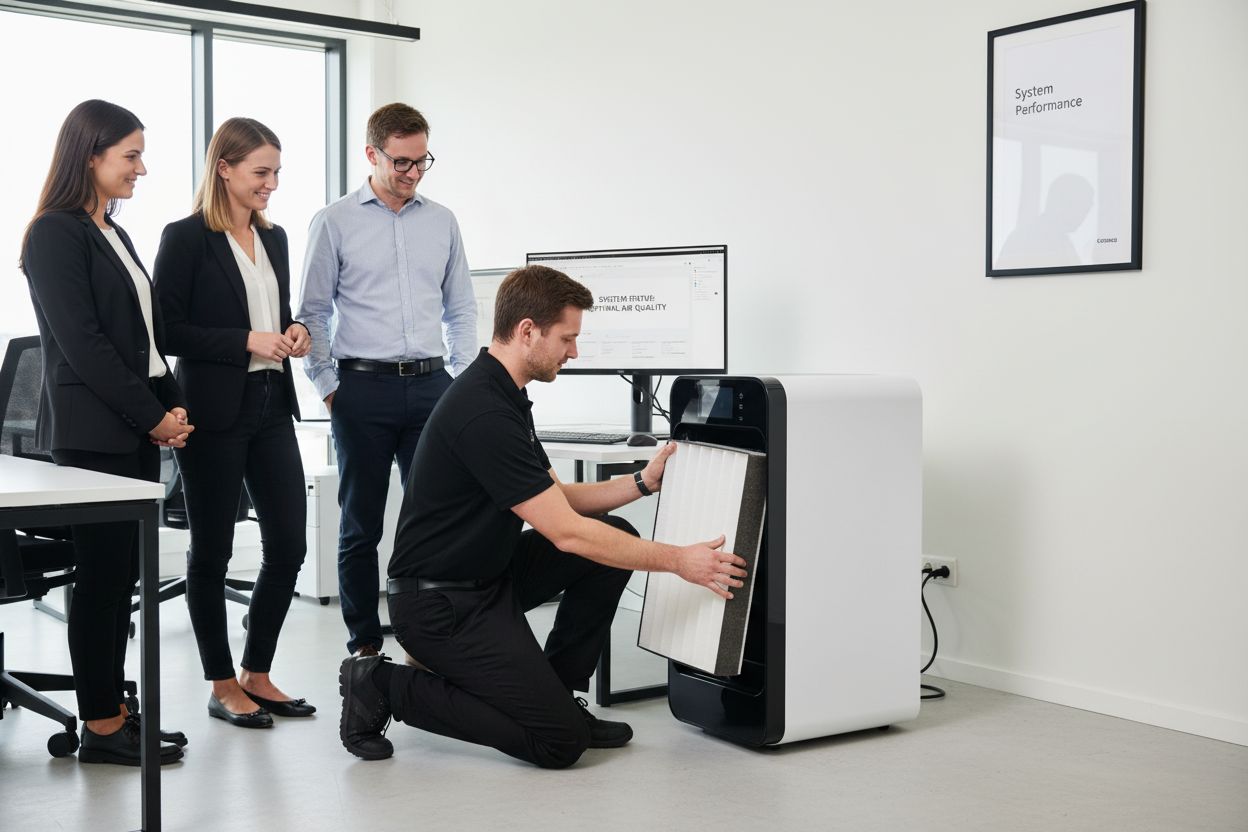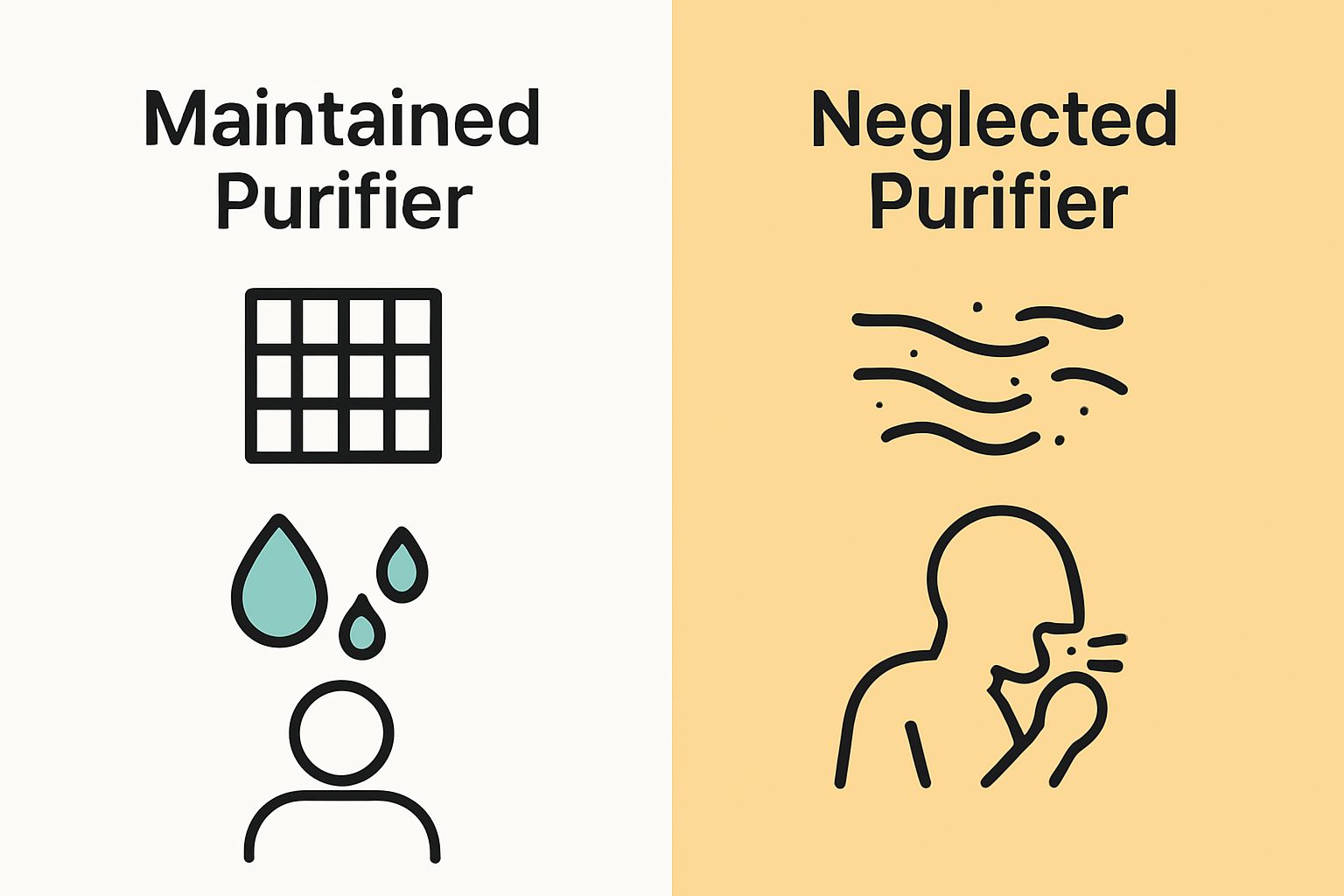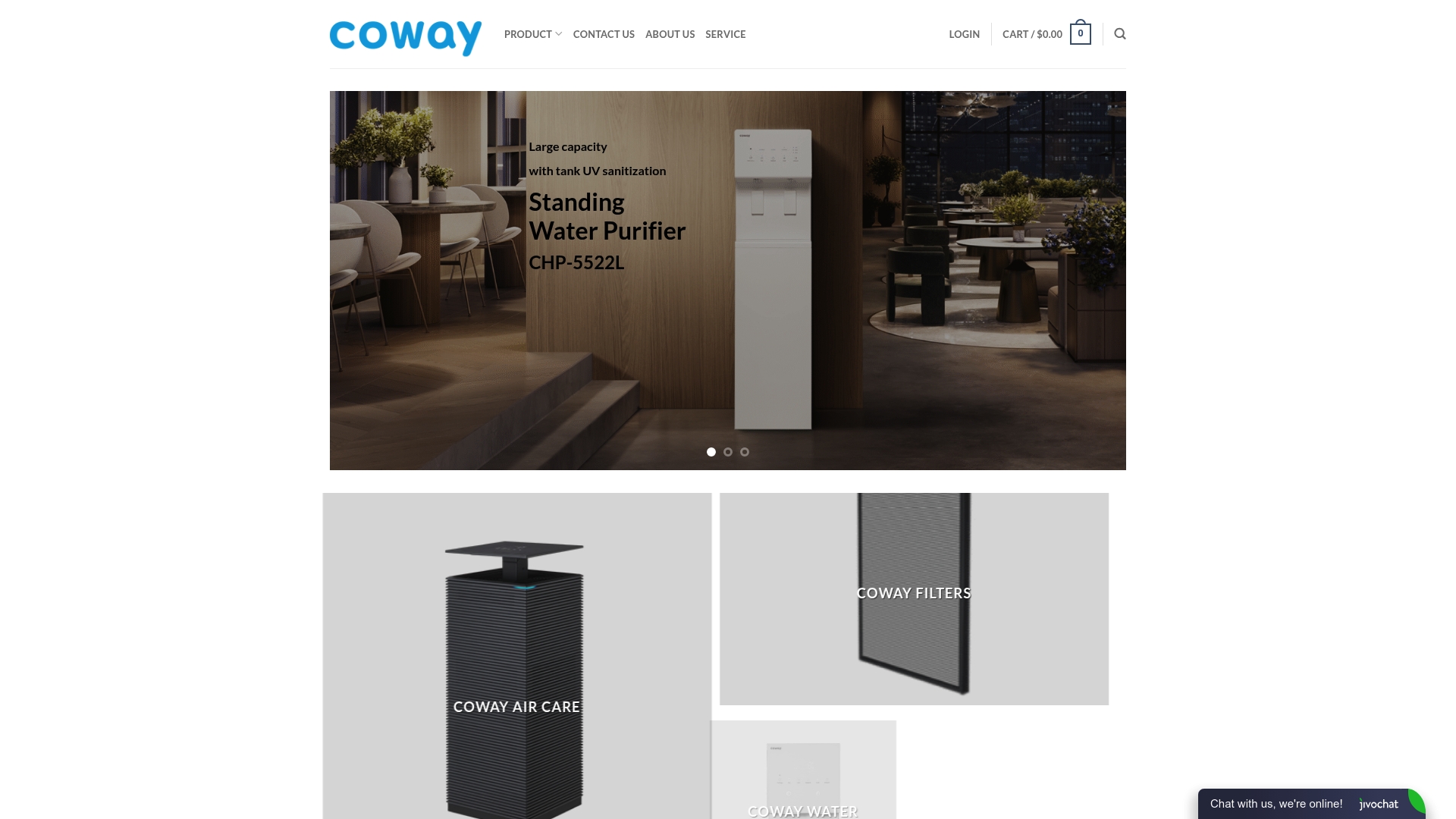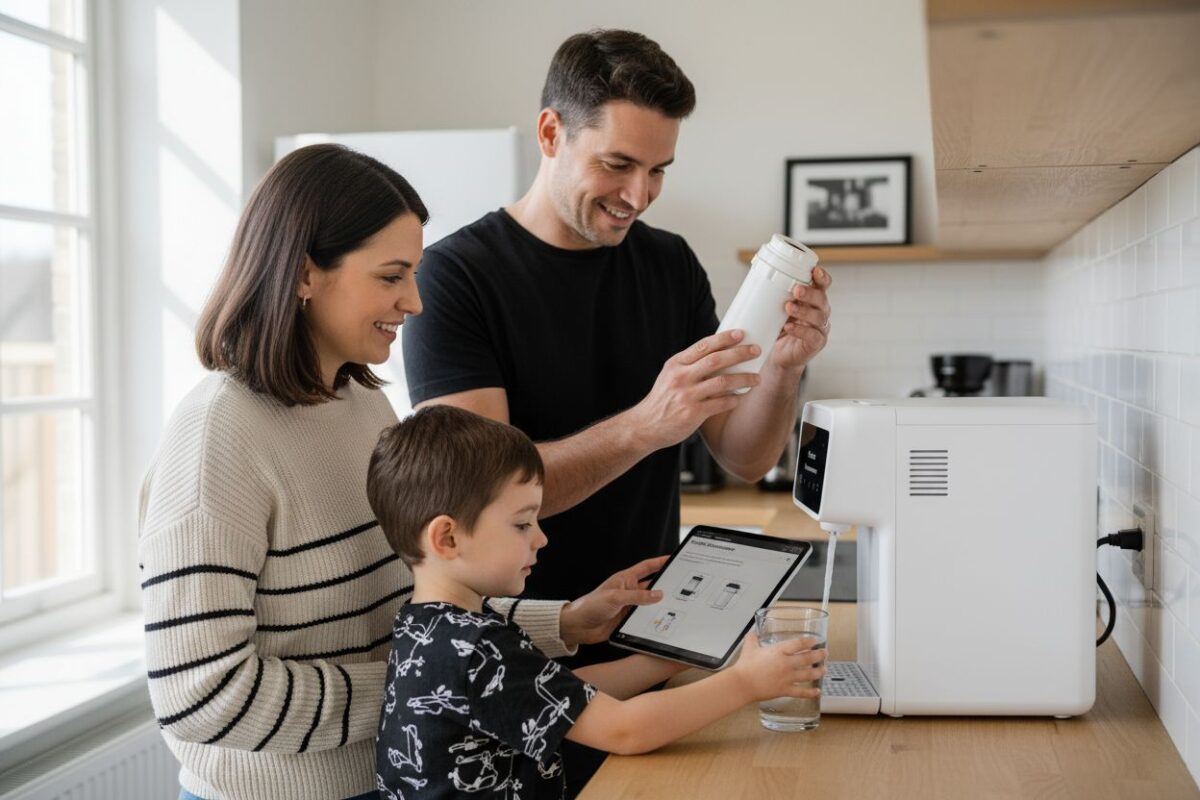Uncategorized
Understanding the Role of Maintenance in Purifiers
Purifiers play a huge role in keeping indoor air and water clean and safe. Here is something most people miss. Neglected purifiers can actually make your air or water worse by re-releasing trapped pollutants and turning into bacterial breeding grounds. So what if skipping routine maintenance is doing more harm than good to your health and your device than you ever realized?
Table of Contents
- The Importance Of Regular Maintenance For Purifiers
- How Maintenance Affects Purifier Performance
- Key Components Of Purifiers Relevant To Maintenance
- Common Maintenance Practices For Optimal Purifier Functioning
- Real-World Impact Of Neglected Maintenance On Health
Quick Summary
| Takeaway | Explanation |
|---|---|
| Regular maintenance extends purifier lifespan | Consistent care enhances the operational life of filtration systems, ensuring they function effectively over time. |
| Neglect can lead to health risks | Poor maintenance may transform purifiers into sources of bacteria and mold, posing health hazards instead of protection. |
| Filter management is essential | Regularly check and replace filters to maintain optimal filtration performance and prevent system degradation. |
| Full system inspections are crucial | Ensure all components are functioning correctly to prevent potential performance issues caused by dust and wear. |
| Investing in maintenance protects health | Proper upkeep of purifiers not only ensures efficiency but also safeguards the quality of air and water for personal health. |
The Importance of Regular Maintenance for Purifiers
Regular maintenance of purifiers is not just a recommended practice but a critical necessity for ensuring optimal performance, longevity, and effectiveness of your water and air filtration systems. The role of maintenance in purifiers extends far beyond simple cleaning, encompassing a comprehensive approach to preserving the device’s core functionality and protecting your health.
Why Maintenance Matters for Purification Systems
Purifiers operate in environments constantly exposed to contaminants, pollutants, and particulate matter. Without consistent maintenance, these systems gradually lose their ability to filter effectively. Research from the U.S. Environmental Protection Agency highlights that unmaintained filtration systems can become sources of recontamination, potentially releasing trapped pollutants back into your environment.
Key reasons maintenance is crucial include:
- Preserving filtration efficiency and performance
- Preventing potential health risks from compromised systems
- Extending the operational lifespan of your purifier
Performance and Health Implications
A poorly maintained purifier can transform from a protective device into a potential health hazard. Filters accumulate microscopic contaminants over time, which can breed bacteria, mold, and other microorganisms if not regularly cleaned or replaced. This buildup can significantly reduce the purifier’s effectiveness and potentially release harmful particles into your living or working space.
For those interested in a comprehensive maintenance approach, read more about our essential purifier maintenance checklist to ensure your system remains in peak condition.
Regular maintenance is an investment in both your device’s performance and your personal health. By dedicating time to consistent upkeep, you protect not just the purifier, but the very air and water you and your family depend on for well-being.
How Maintenance Affects Purifier Performance
Maintenance is the critical backbone of purifier performance, directly influencing its ability to effectively remove contaminants and maintain optimal filtration standards. Understanding the intricate relationship between maintenance practices and system efficiency reveals how seemingly minor interventions can substantially impact overall purification quality.
Filtration Efficiency and Component Degradation
Research from the National Institute of Environmental Health Sciences demonstrates that neglected purification systems experience significant performance decline. As filters accumulate particulate matter, their microscopic pores become progressively clogged, reducing their capacity to trap contaminants effectively.
Key performance degradation factors include:
- Reduced clean air delivery rates
- Increased energy consumption
- Compromised filtration precision
- Potential bacterial and mold growth within filter mechanisms
Technical Impact of Maintenance Neglect
Purifiers rely on delicate mechanical and filtration components that require consistent care. When maintenance is overlooked, multiple technical consequences emerge. Filter membranes become saturated, sensors lose calibration, and internal mechanisms experience increased friction and wear. This gradual deterioration translates to decreased system reliability and potential complete functional breakdown.
Explore our comprehensive water purification maintenance guide to understand the nuanced strategies for maintaining peak purifier performance.
Proactive maintenance is not merely a recommended practice but a fundamental requirement for preserving your purifier’s operational integrity. By investing time in regular system checks and component replacements, users can ensure consistent, high-quality filtration that protects their health and extends their equipment’s functional lifespan.
Key Components of Purifiers Relevant to Maintenance
Understanding the integral components of purifiers is fundamental to developing an effective maintenance strategy. Each component plays a unique role in the purification process, and its individual performance directly impacts the system’s overall efficiency and effectiveness.
Primary Filtration Components
According to the Environmental Protection Agency, purifiers contain several critical components that require consistent monitoring and maintenance. The primary filtration elements serve as the first line of defense against contaminants and particulate matter.
Key filtration components include:
- Pre-filters that capture large particles
- HEPA filters designed to trap microscopic pollutants
- Activated carbon filters for removing odors and chemical substances
- Specialized membrane filters for water purification systems
Electronic and Mechanical Systems
Beyond filtration elements, purifiers rely on sophisticated electronic and mechanical systems that demand regular attention. Sensors, fans, and internal circuits work in concert to monitor air quality, regulate airflow, and ensure optimal performance. These components are susceptible to wear, dust accumulation, and potential calibration issues that can compromise the entire system’s functionality.
Learn more about maintaining your purification system’s core components to ensure long-term reliability and performance.
The intricate nature of purification systems underscores the importance of comprehensive maintenance. Each component represents a critical link in the chain of air and water quality management, and neglecting even a single element can significantly reduce the system’s overall effectiveness and potentially compromise the health benefits these devices are designed to provide.
Below is a table summarizing the key components of purifiers and their maintenance requirements to help readers understand which parts are essential for upkeep and why they matter.
| Component | Purpose | Maintenance Focus |
|---|---|---|
| Pre-filter | Captures large particles like dust and hair | Clean or replace regularly |
| HEPA filter | Traps microscopic pollutants (e.g., allergens, fine dust) | Replace at recommended intervals |
| Activated carbon filter | Removes odors and chemical substances | Monitor for saturation, replace |
| Membrane filter | Used in water purification for removing tiny contaminants | Inspect for clogging, replace |
| Sensors | Monitor air or water quality and system performance | Check calibration, clean as needed |
| Fans/mechanical parts | Regulate airflow and enable filtration process | Inspect for dust/wear, clean |
Common Maintenance Practices for Optimal Purifier Functioning
Maintaining a purification system requires a strategic approach that goes beyond occasional cleaning. Proactive maintenance involves understanding the specific needs of your device and implementing consistent, targeted practices that preserve its functionality and performance integrity.
Regular Filter Management
According to Environmental Protection Agency guidelines, filter maintenance stands as the cornerstone of purifier upkeep. Filters represent the primary mechanism through which contaminants are captured and removed, making their condition critical to overall system effectiveness.
Key filter maintenance considerations include:
- Establishing a consistent replacement schedule
- Monitoring filter saturation levels
- Checking for visible debris or discoloration
- Understanding manufacturer-specific replacement recommendations
Comprehensive System Inspection
Beyond filter replacement, a holistic maintenance approach encompasses examining the entire purification system. This involves assessing electronic components, verifying sensor calibration, and ensuring all mechanical parts function smoothly. Dust accumulation, electrical connections, and internal circuitry require periodic evaluation to prevent potential performance degradation.
Discover our detailed guide on comprehensive purifier maintenance to develop a robust maintenance strategy.
Effective maintenance transcends routine tasks and represents a commitment to sustained performance. By implementing systematic care practices, users can significantly extend their purifier’s operational lifespan, maintain peak filtration efficiency, and ensure consistent protection against environmental contaminants.

Real-World Impact of Neglected Maintenance on Health
Purification systems are designed to protect human health by removing harmful contaminants from air and water. However, when these systems are not properly maintained, they can transform from protective barriers into potential sources of health risks, compromising the very environment they are meant to safeguard.
Biological Contamination Risks
Research from the International Journal of Environmental Research and Public Health reveals the profound health consequences of unmaintained purification systems. Filters that are not regularly cleaned or replaced become breeding grounds for bacteria, mold, and other microorganisms. These accumulated contaminants can rapidly multiply, creating a concentrated reservoir of potential pathogens that are subsequently released back into the living environment.
Key health risks associated with neglected purifiers include:

- Increased respiratory infection probability
- Aggravation of allergic reactions
- Potential trigger for asthma symptoms
- Compromised immune system response
- Higher susceptibility to indoor air pollution related illnesses
Long-Term Health Implications
Chronic exposure to contaminants through poorly maintained purification systems can lead to significant long-term health complications. The continuous circulation of unfiltered or inadequately filtered air and water can result in persistent inflammatory responses, reduced lung function, and increased vulnerability to chronic respiratory conditions.
Explore our comprehensive guide on protecting your health through proper purifier maintenance to understand the critical connection between system upkeep and personal wellness.
Ultimately, maintenance is not merely a technical requirement but a direct investment in personal and family health.
This table outlines the main health risks associated with neglected purifier maintenance, providing a quick reference for the types of problems that can arise from inadequate upkeep.
| Health Risk | Description |
|---|---|
| Increased respiratory infections | Higher chance of breathing-related illnesses due to contaminants |
| Aggravation of allergies | Worsening of allergy symptoms from mold, dust, and pollen buildup |
| Asthma symptom triggers | Higher risk for asthmatics from poor air or water quality |
| Compromised immune response | Greater exposure to pathogens can weaken the immune system |
| Higher indoor pollution exposure | Poor filtration allows more particulates and chemicals in the environment |
| By recognizing purifiers as dynamic protective systems that require consistent care, users can transform these devices from potential health risks into reliable guardians of indoor environmental quality. |
Ready for Worry-Free Purification? Discover Coway’s Maintenance Solutions
If reading about the risks and health issues caused by neglected purifier maintenance has you concerned, you are not alone. Many people struggle with filters that grow dirty or systems that become less effective over time. Protecting your home starts with reliable maintenance and technology designed to keep your air and water safe—every single day. To understand how proper care directly impacts your well-being, explore our latest maintenance articles and get real-world insights into why this matters.

Experience the Coway difference for yourself. Choose a purifier that not only uses cutting-edge filtration but also comes backed by hassle-free service, including free delivery, expert installation, and support for ongoing maintenance. Visit Coway Water Purifier and browse our advanced water and air purifiers. Take action now to ensure a safer, healthier future for you and your loved ones. Your ideal solution is only a click away.
Frequently Asked Questions
How often should I perform maintenance on my purifier?
Regular maintenance of your purifier should occur at least once every 3 to 6 months. Check and replace filters as needed and clean external parts to ensure maximum efficiency.
What are the key components I should check during purifier maintenance?
Focus on inspecting key components like pre-filters, HEPA filters, activated carbon filters, and the electronic systems. Make it a habit to evaluate these parts regularly to prevent performance degradation and ensure effective purification.
How can I tell if my purifier needs a filter replacement?
Look for signs such as decreased airflow, unusual noises, or visible discoloration of filters. If you notice any of these indicators, replace the filters immediately to maintain optimal filtration performance.
What are the risks of neglecting purifier maintenance?
Neglecting maintenance can lead to biological contamination, making your purifier a source of pollutants rather than a protector. This can result in increased respiratory issues and long-term health complications, so ensuring regular upkeep is essential.
How do I establish a filter replacement schedule for my purifier?
To establish a filter replacement schedule, refer to the manufacturer’s guidelines and consider your usage frequency. For general use, aim to replace filters every 3 months, and adjust based on your specific environment and filter condition.
What should I include in a comprehensive inspection of my purification system?
Include checking filter conditions, assessing electronic components, and ensuring all mechanical parts are functioning properly. Conduct these inspections every 3 months to identify potential issues early and maintain effective operation.
Recommended
- Understanding Why Maintenance Matters for Purifiers – Coway Water Purifier
- 7 Essential Steps for Your Purifier Maintenance Checklist – Coway Water Purifier
- Essential Water Purification Maintenance Schedule for 2025 – Coway Water Purifier
- Understanding Why Change Purifier Filters Matters for Health – Coway Water Purifier

